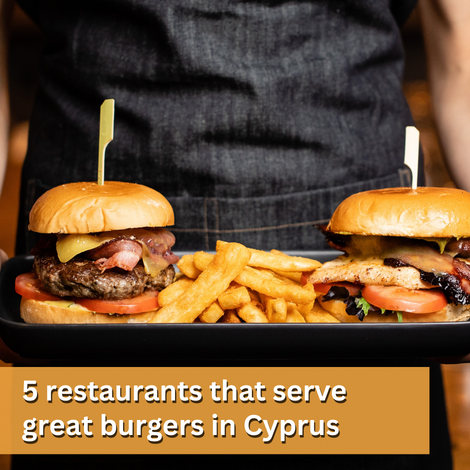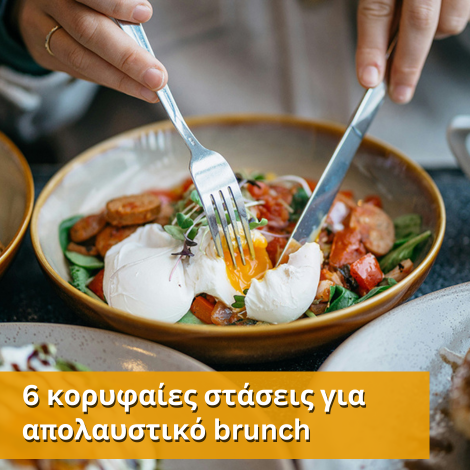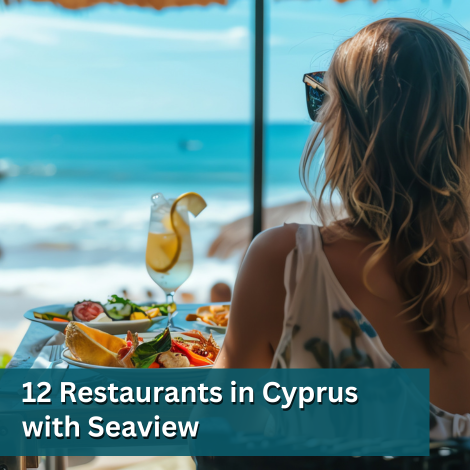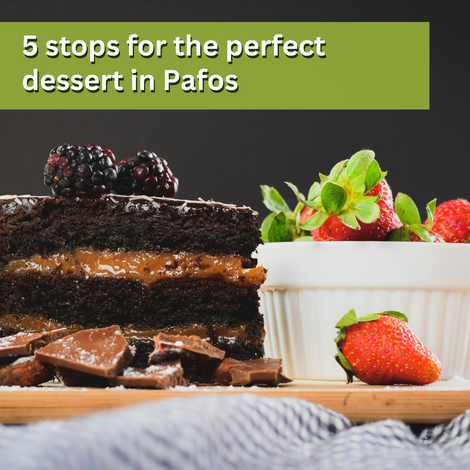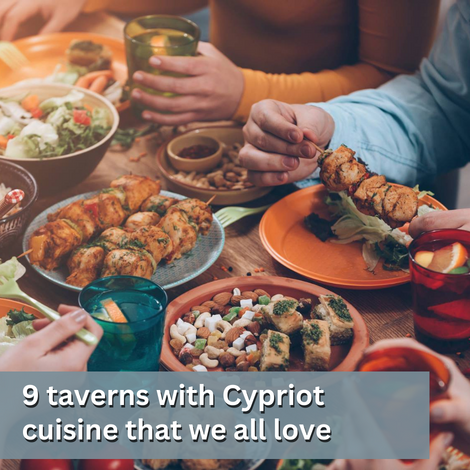Feasting and Fasting
Christmas in Cyprus
“Dad - you know those Greek cakes you brought last Christmas, the ones that Tom scoffed up?” Tom is one of my grandsons, by the way. “Well could you bring some more over please? We all love them.”
“The Melomakarona”, I replied to my daughter. “Yes sure!”
Christmas is a time of feasting in Cyprus and there will doubtless be much over-indulgence. The modern British (and some other European) practice of eating Turkey on Christmas day will be largely followed. A few Turkeys were first brought to England from America about 500 years ago. You may be surprised to learn that they only started becoming common Christmas fayre in England about 60 years ago.
Formerly Goose or Duck was the main Christmas dinner in England and Roast Pork was the tradition in Cyprus. See my article on what is different at Christmas in Cyprus.
But, traditionally for Greek and other Orthodox, the time before the Christmas Feasting is a time of Christmas Fasting (or in English, more correctly termed, abstinence). The Greek language does not use different words for fasting and abstinence. It is a time for spiritual preparation for the big feast – a bit like Yin and Yan or sleeping and waking. Full guidelines can be found at https://antiochianprodsa.blob.core.windows.net/liturgicalinstructions/Fasting%20Calendar%20for%202019.pdf.It can seem a strange concept for those not brought up in the tradition. There is no punishment nor reward. It is not undertaken to please God nor is it thought that he will be angry if you do not undertake it. It is purely an exercise for yourself, your own self-improvement. You don't even need to believe in God to undertake it. The Nativity fast, or period of abstinence, is officially between the 15th November and 24th December, but few people will practice it fully these days.
I find it interesting to compare the prescribed foods in one religion with those forbidden in another. The Jews, for example, are forbidden Octopus, prawns, shellfish and other seafoods at all times. For Christian Orthodox these are the very foods that are promoted as alternatives on fast days when meat and fish are off the menu.
The above dish, though, would be considered inappropriate for "Nistia" for being too elaborate. It is a time when it is recommended to avoid gourmet cuisine and go for simpler styles like the seafood dishes below:

In my opinion the hardest thing to give up during this period of abstinence is neither, wine, nor meat nor dairy products, but oil on those three days a week when one is asked to avoid it. The rest of the time it is quite easy to prepare simple vegan menus that, without going into the realms of gourmet cuisine, are delicious and satisfying. Here are three of my favourites:
- Fassolakia Lathera (Giahni in Cypriot dialect).
- Vegetarian Gemista. Tomato and pepper are general favourites, but courgette and aubergine are good too.
- Briam – a kind of Greek ratatouille that includes potatoes and is cooked in the oven not in a casserole.
Let’s have a look at the recipes. I describe the way I prepare these dishes. Different people may have slight variations.
- The Fassolakia Lathera. - Lathera literally means oilies, and it is no accident that this word appears in the name.
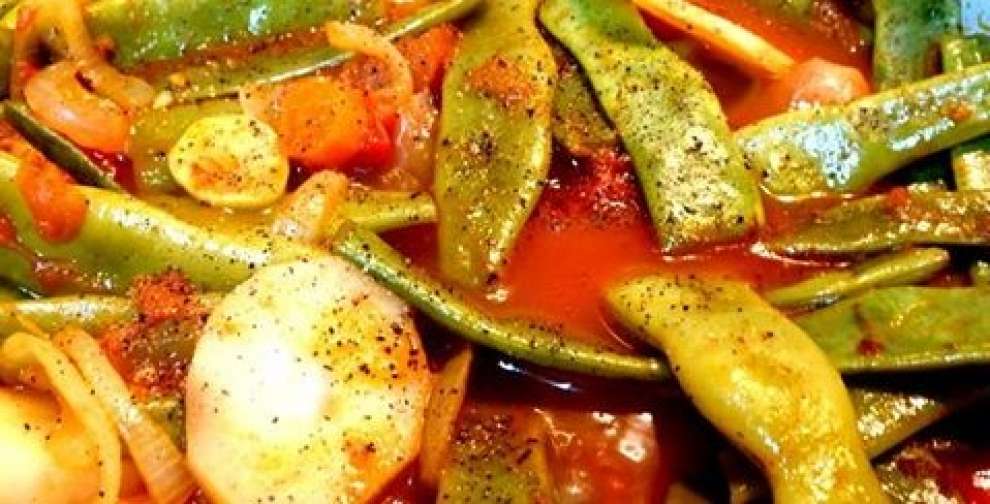
Ingredients (for 4 people)
1.5 kg Green Beans – I like half to be the flat ones and the other half to be the thinner, more crunchy, Yardlong beans.
2 carrots
3 medium sized potatoes
1 courgette/small sweet marrow
4 medium tomatoes
1 cup good olive oil
1 large onion
2 cloves garlic
Tomato ketchup
Water if needed
Salt & pepper
Cinnamon powder or two cinnamon sticks
1 tablespoon Dried Oregano
2 bay leaves
Half a cup chopped parsley
How to prepare
Cut the ends off the beans and slice away any stringiness from the sides. Slice fairly thinly the potatoes, carrots and courgette/sweet marrow such as you find in Cyprus.
Slice the onion and finely chop the garlic. Put in a large saucepan. Slice the top of the four tomatoes and cut round the insides. Place in the saucepan upside down. Pour a little of the olive oil and put on the hob to heat at high heat initially then at about the half-way mark when the onion starts to sizzle. After you have sautéed these for a while you will find that the tomato skins can be pulled off easily. Once the skins are off mash or chop the tomato pulp.
Add your potatoes and carrots. Sautee these for a few minutes. Add your beans and courgette. Add your parsley, oregano bay leaves and cinnamon sticks (or give a sprinkling of cinnamon). Salt and pepper to taste. Add the remaining olive oil. Add a good squirt of ketchup. In the days before ketchup one would add a little sugar. Stir well and bring to the boil, then simmer for forty minutes. At the early stages I don’t add any water. The vegetables shed a lot of juice. If towards the end there does not seem much liquid left in the saucepan then I add a little bit of water to prevent the vegetables from catching on the bottom.
2. Nistissima Gemista – Vegan Stuffed Vegetables
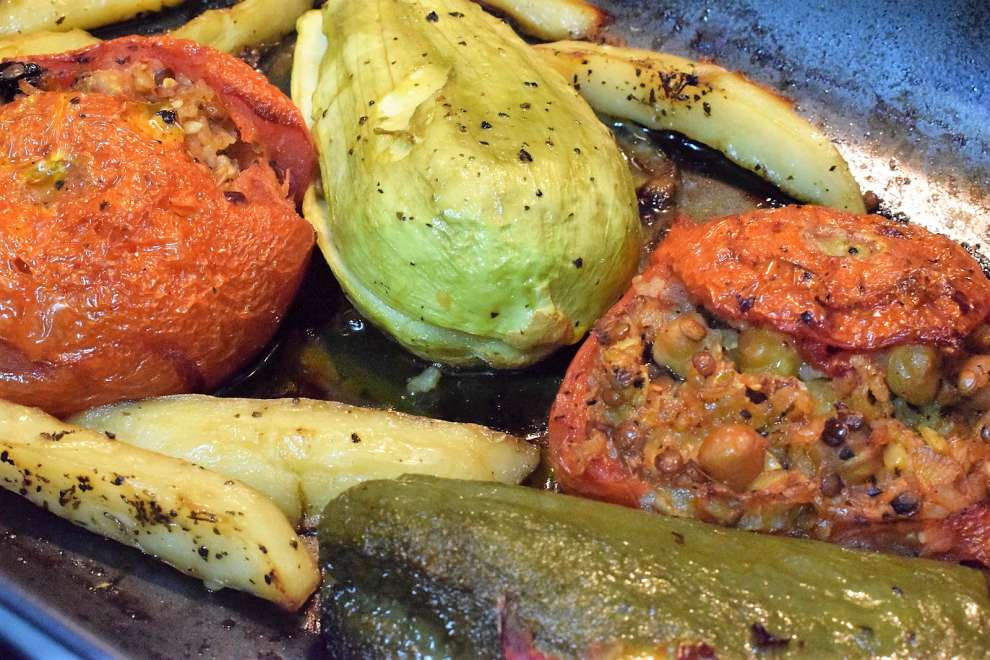
Gemista are typically made with large tomatoes and green peppers, but you can stuff any vegetables – even courgette flowers. In the case of aubergines and marrows people often hollow them out with a knife and spoon. I find it simpler to slice them in half, scoop out the pulp and put the two halves together again after stuffing. Some people claim it is not necessary to sweat the aubergines with salt. I feel they taste much better if you do.
Ingredients (for 4 people)
4 large tomatoes
4 green bell peppers
4 medium sized aubergines or little marrows of the type in my photo
2 large potatoes
1 large onion
2 cloves garlic
2 Greek coffee cups worth of rice
Same of cooked chick peas
Also of cooked split pea lentils
1 Greek coffee cup worth of raisins or cranberries
Half a cup of chopped parsley
1 tablespoon of dried oregano
Good Olive Oil
Water
Tomato Ketchup
Salt & pepper
How to prepare
Slice your aubergines or marrows in half, and in the case of the aubergines salt them to sweat them out. Wipe off the brown liquid from the aubergines and scoop out the pulp from the aubergines or courgettes. Cut it up finely.
Finely chop the onion and garlic. Put into a large frying pan. Add just enough olive oil to allow you to heat the onion and sauté for a few minutes. Meanwhile slice the top of the tomatoes, but don’t take the tops off completely; leave a little hinge. Scoop out the pulp, chop it and add it to the frying pan. Slice the peppers in the same way, but throw away the seeds.
Add the chopped pulp from the aubergines or marrows. Add the oregano; add the parsley; salt and pepper to taste. Stir and sauté for a little while longer Add the rice, chick peas, split peas and raisins or cranberries. And five Greek coffee cups worth of water and a good squirt of tomato ketchup. Bring to the boil and simmer till the rice cooks.
While it is cooking slice your potatoes into wedges.
When the rice is cooked, stuff your vegetables with the rice mix and place in a baking dish. Add your potato wedges in between the vegetables. Pour in a little water, just to stop everything sticking to the dish. Salt and pepper the potatoes. Add some oregano to them. Drizzle olive oil over everything.
Cover the dish and cook in the oven at 200C for 40 minutes. Take off the lid. Turn over the potato wedges and those vegetables that can be turned (for more even cooking). Cook for a further forty minutes, basting occasionally.
3. Briam or Tourlou Tourlou
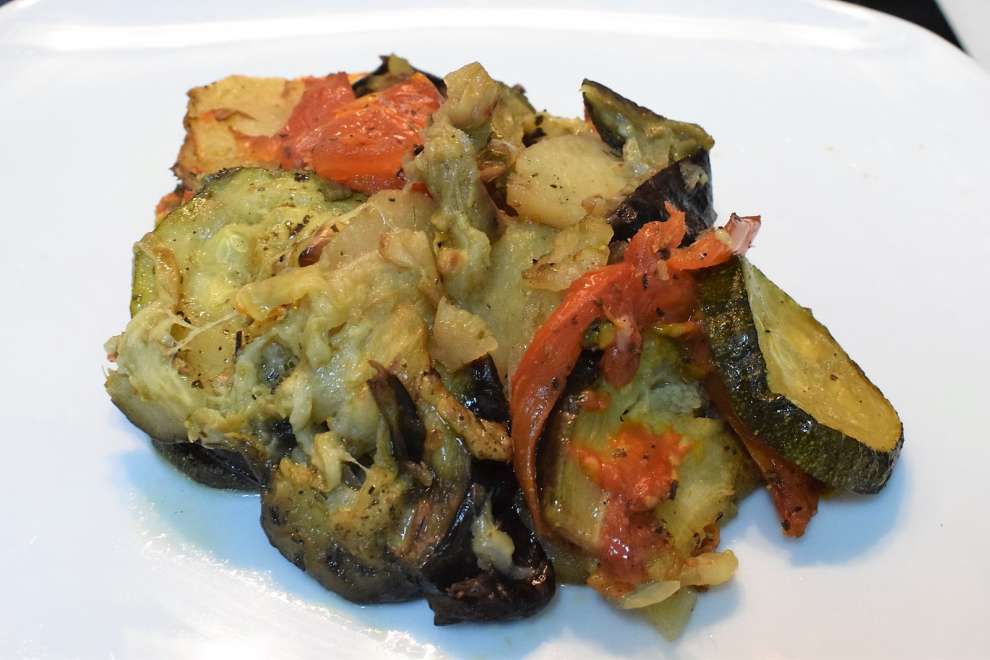
“Tourlou Tourlou” means everything all mixed up!
This dish is the Greek equivalent of Ratatouille, with two main differences – it includes potatoes and it is cooked in the oven rather than over a hob.
I have not written down the recipe for this as it is rather admirably demonstrated in the header video.
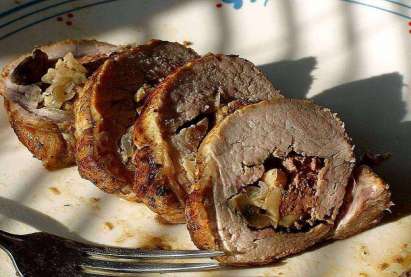
You may also like to read my article on what's different about Christmas in Cyprus

 English
English
 Ελληνικά
Ελληνικά Русский
Русский
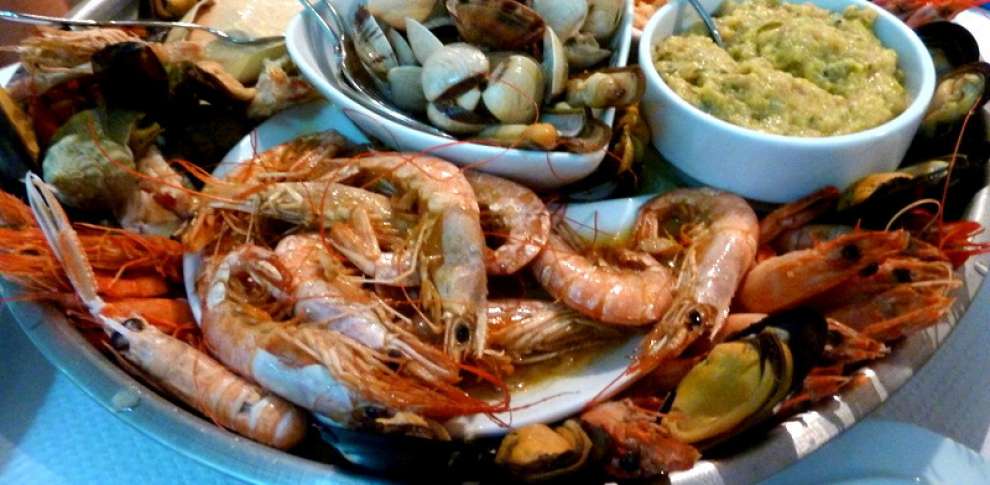
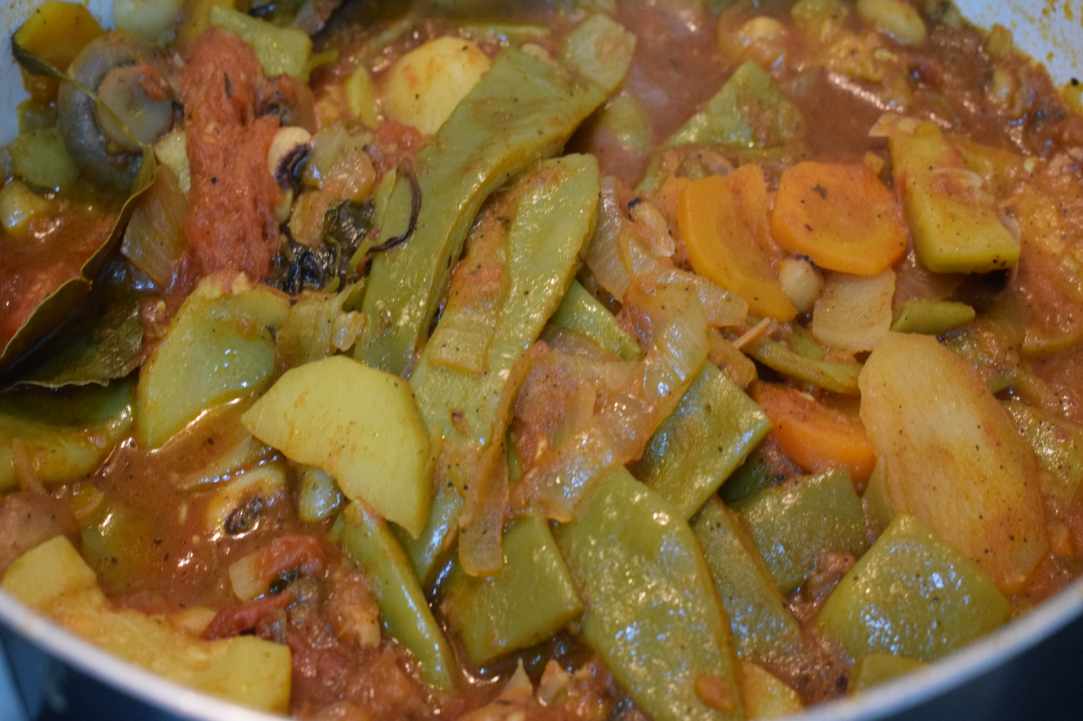
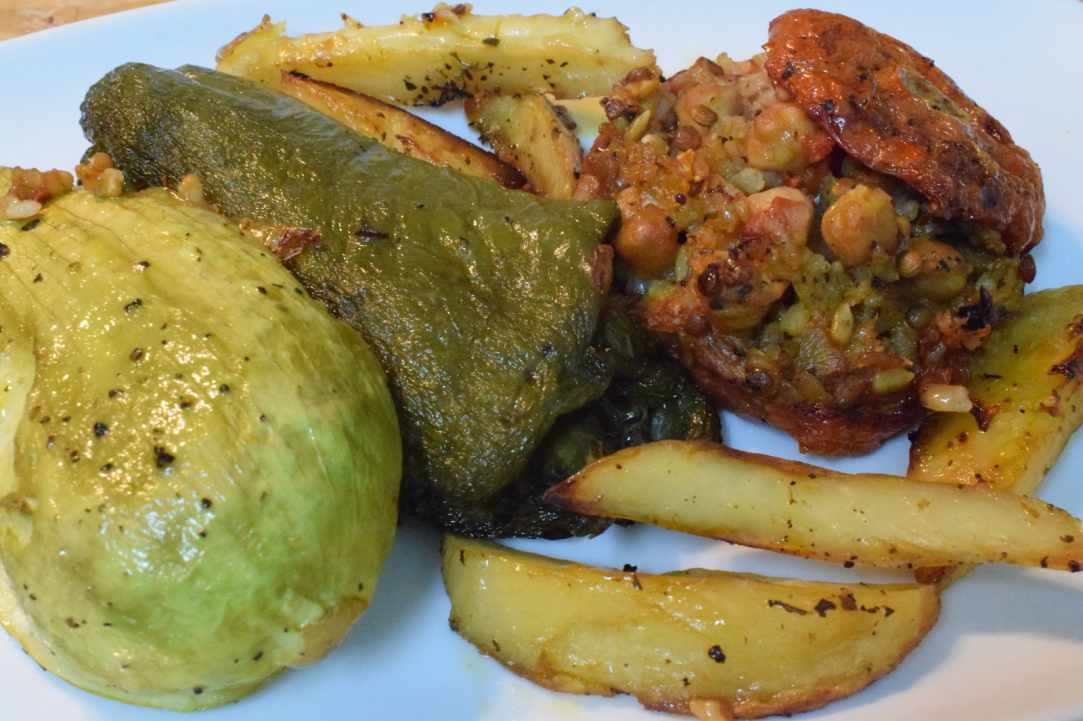
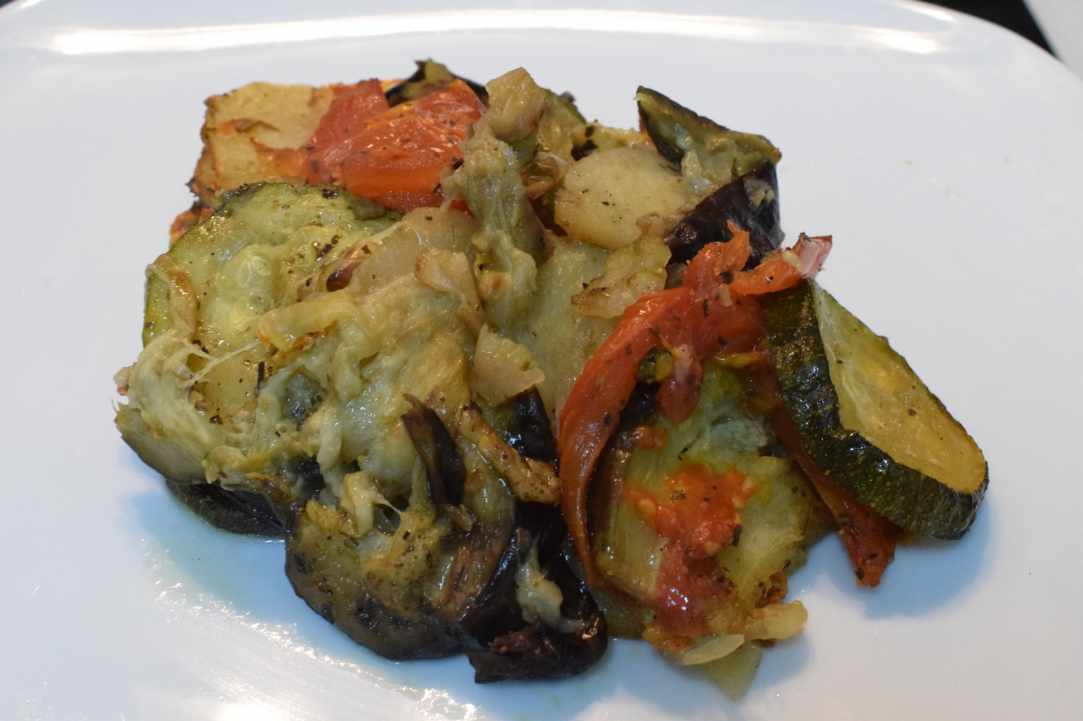
 Posted by
Bill Warry
Posted by
Bill Warry
